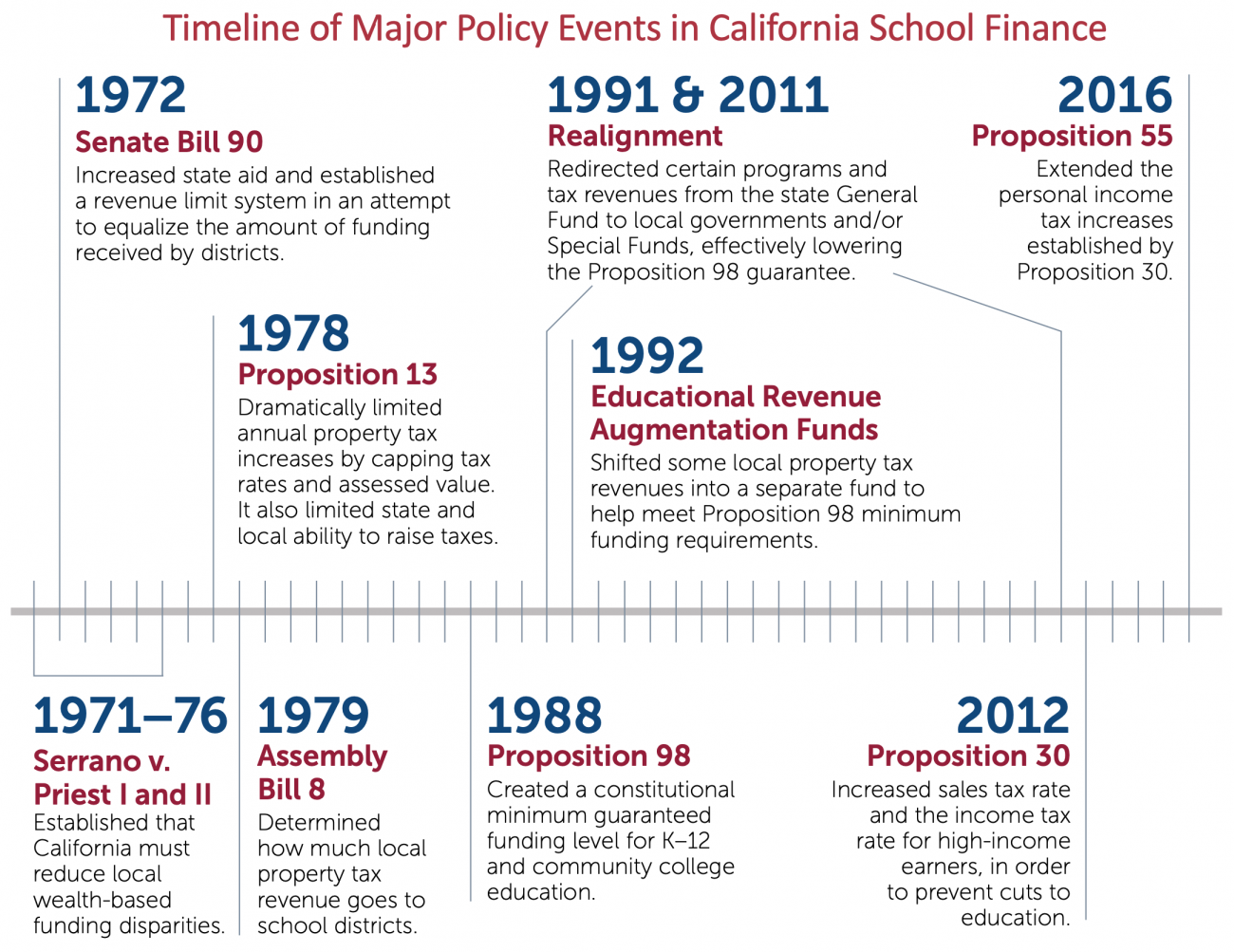Securing and Protecting Education Funding in California

Summary
California and the rest of the country are enduring a pandemic-induced economic recession, and school and district leaders are bracing for the fallout. Funding for California schools had improved rapidly between 2013 and 2019, with districts spending roughly $13,100 per pupil in 2018–19 as compared with $9,680 only 6 years earlier. However, that level of funding still fell short of what would have been adequate given California’s goals as a state, the student population it serves, and its cost of living.
According to Levin et al.’s 2018 Getting Down to Facts II study, California would need to spend about $4,000 more per pupil—an additional $26.5 billion annually—to meet its goals. Although the state had begun to chip away at that funding gap before the pandemic, the wide gulf that remained is poised to grow once again.
Schools and districts now face three major challenges: precipitous declines in student achievement and social-emotional well-being due to COVID-19; increased costs associated with distance learning and school reconfiguration to ensure health and safety; and the need to tighten budgets.
Securing and protecting the funding necessary to address student needs will require an enormous and sustained effort from many stakeholders. Yet that is what California leaders must do if they wish not only to improve schools and student outcomes but also to strengthen the economic and social outlook for future generations of our children and communities.
Where Could New Funding Come From?
The new report Securing and Protecting Education Funding in California—summarized in a related policy brief—examines examines how California might secure and protect revenues for schools in sustainable and responsible ways over both the short and long terms. It discusses why California needs adequate education funding, how California’s schools are currently financed, and how that structure affects schools during good and bad fiscal times. It then draws upon research as well as perspectives from policymakers, advocates, and education and tax policy experts to offer recommendations.
The report finds the following:
- Education funding has been shaped by a complicated web of decades-old policies and voter initiatives. Although the Local Control Funding Formula modernized the revenue-distribution formula, corresponding changes have not been made on the revenue-generation side of the equation (see timeline on back).
- There is near-universal agreement that more funding is needed. Even so, there is little agreement about what the specific funding goal should be.
- Both state and local revenue sources will need to be identified in order to close the funding gap. However, the state must balance principles of equity and local control to ensure the greatest resources are available to communities and students with the greatest needs.
- A balanced mix of tax and other policy options must be employed to maximize revenues while spreading the tax burden, minimizing volatility, and mitigating negative economic consequences. Tax increases cannot be the only solution; California must also reexamine its priorities as a state.
- New revenues must be paired with systems improvements and accountability. Stakeholders want to know how spending is translating into better practice and improved student outcomes.
- Public and political will to secure new funds for education could be strengthened by broadening coalitions, improving stakeholder collaboration, improving transparency, and telling more positive stories about the successful changes that are being made in our schools and communities. The governor and other state influencers must play a leadership role in securing more funding.
- Early education, K–12, higher education, and other children’s services segments must work collaboratively in order to braid funding and break down the siloing of services.

Based on these findings, the report offers the following recommendations:
- State leaders should seek additional federal revenues, including coronavirus relief and stimulus funds in the short term, and more Title 1 and IDEA funds in the longer term.
- Stakeholders should identify new and sustainable state and local revenue sources; support efforts to raise property taxes to market rates and also reduce tax expenditures.
- State leaders and education stakeholders should develop a master plan for education funding that covers more than just K–12, particularly early education.
- The state should strengthen fiscal transparency and analysis so that stakeholders understand how money is being used and see the results of that spending.
- Researchers and policy analysts should examine how to modernize California’s school funding infrastructure.
For a printable version in infographic form of the text on this page, click here.
Hahnel, C., Hough, H. J., & Willis, J. (2020, September). Securing and protecting education funding in California [Policy brief, report, infographic]. Policy Analysis for California Education. https://edpolicyinca.org/publications/securing-and-protecting-education-funding-california



